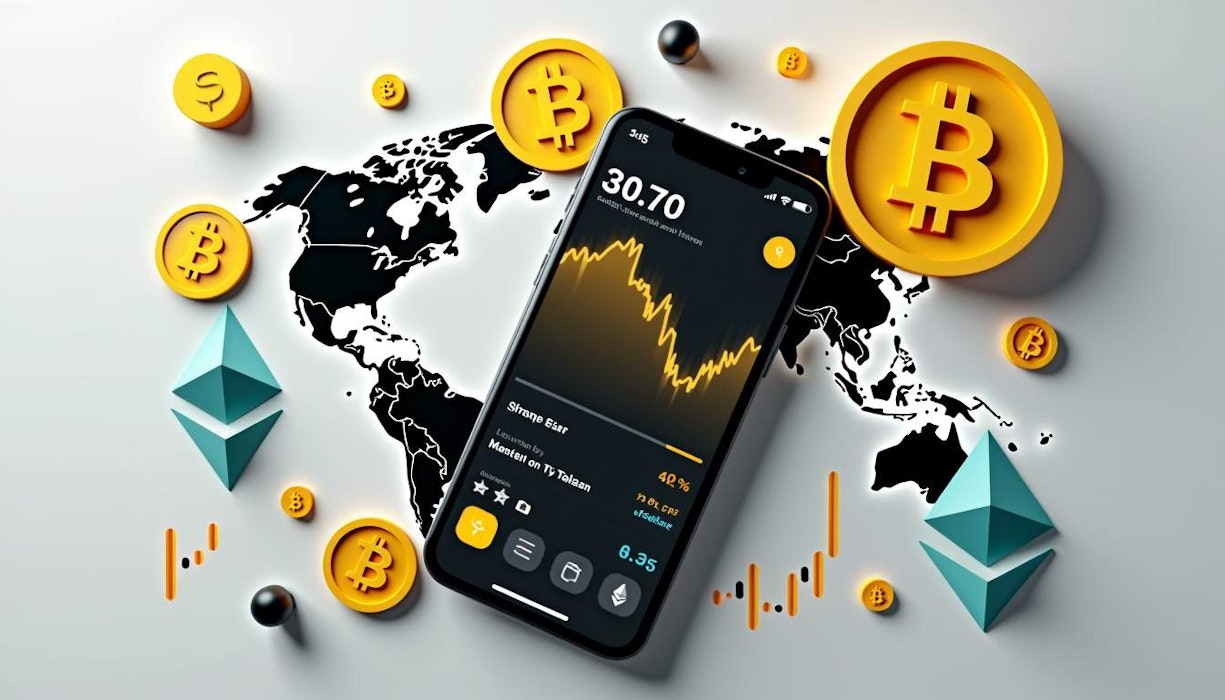As geopolitical tensions rise, the cryptocurrency market faces unprecedented volatility. Bitcoin, the leading digital asset, has seen its value fluctuate dramatically in response to global events. This article explores how geopolitical factors influence Bitcoin's price, the role of US investor demand in stabilizing the market, and the implications of significant Bitcoin outflows from exchanges. Discover how these dynamics shape the future of cryptocurrency trading and what investors can expect in the coming months.
Introduction to Cryptocurrency Volatility
The crypto market is a wild beast, isn't it? Driven by everything from tech breakthroughs to regulatory shake-ups, one thing's for sure: it's never boring. But if there's one thing that's been a major player lately, it's geopolitical tensions. Whether it's military conflicts or economic sanctions, these events can send prices soaring or crashing faster than you can say "HODL."
The Impact of Geopolitical Tensions on Bitcoin
Bitcoin seems to be on an emotional rollercoaster ride with every new conflict that pops up. A study aptly named "Investigating the Impact of Geopolitical Risks and Uncertainty on Bitcoin" shows just how intertwined they are. Turns out, acts of geopolitical craziness and even things like economic policy uncertainty give Bitcoin a nice little boost—at least in terms of volatility.
Take recent events as a case study: when tensions flared up between Israel and Iran, Bitcoin took a nosedive. An article I came across detailed how Iran launched missiles at Israel and boom—Bitcoin dropped to $60K after being at $64K just days before. Over half a billion dollars got liquidated in 24 hours! Talk about panic selling.
US Investor Demand and Market Stabilization
But here's where it gets interesting: despite all that chaos, US investors seem pretty chill—and maybe even bullish? According to some analysis I stumbled upon from CryptoQuant, there's this thing called the Coinbase Premium Index that shows just how much demand there is from American investors right now. Basically, when Coinbase prices are higher than Binance (which they usually are because Americans love paying extra), it indicates strong local demand.
This local demand seems to act like a cushion against all those global pressures trying to push Bitcoin down into Bearsville. And let's be honest; when big companies announce they're accepting Bitcoin as payment? Prices usually go up then too.
Understanding Bitcoin Outflows and Market Sentiment
Another fascinating aspect is what happens when tons of Bitcoin suddenly leave exchanges—it's usually a sign that people are getting ready for a long haul rather than selling off their stash at rock-bottom prices.
If you look at some on-chain data during these outflows—especially if whales are involved—you'll see it paints quite an optimistic picture actually! Less available for sale + confident holders = potential upward pressure down the line.
Strategies for Crypto Trading Amidst Global Uncertainty
So how do we navigate this stormy sea of volatility? Here are some strategies I've been considering:
Diversify Your Portfolio: Don’t put all your eggs in one basket. Stay Informed: Knowledge is power; know what’s going on geopolitically. Use Technical Analysis: Charts don’t lie (most times). Set Stop-Loss Orders: Protect yourself from catastrophic losses. Consider Long-Term Holding: Sometimes patience pays off big time.
Summary: The Future of Cryptocurrency in a Volatile World
At the end of the day, it looks like geopolitical tensions aren’t going anywhere—and neither is crypto’s crazy volatility along with them! While strong US investor demand may offer some stability amidst chaos; bitcoin remains susceptible to extreme fluctuations based on global events unfolding before our eyes.
As we move forward into this uncertain landscape; being informed & strategic will be key for anyone looking venture into these waters!
